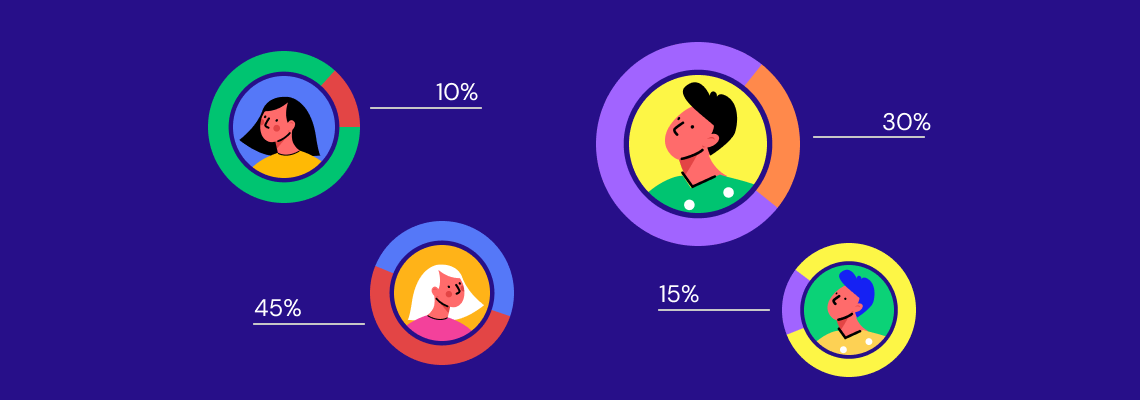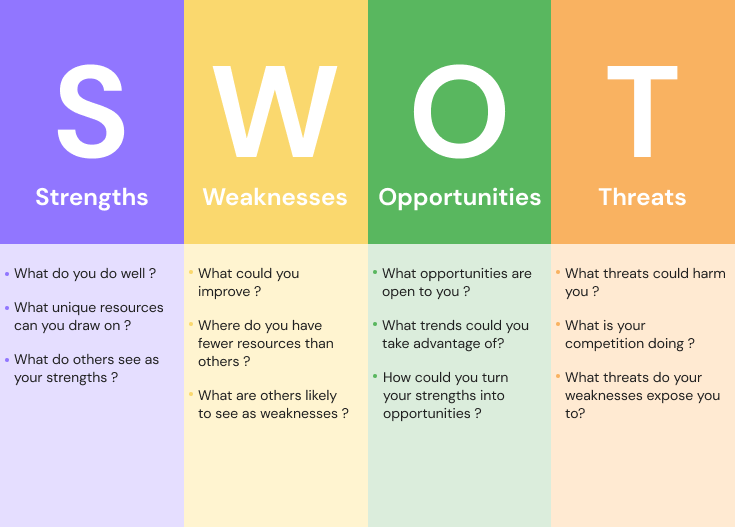Reach Your Target Audience: How to Find the Right Audience for Your Product
2023-04-17

When it comes to successful social media marketing, developing a clear picture of the target audience may be the most crucial thing to do. The more you know about your target market, the better you'll be able to target your ads and reach the people who are most likely to become customers. As a result, one of the most important aspects of a marketing strategy is determining the relevant target audience for your brand. But what target audience actually is and how to find yours? Let’s figure it out.
What is the target audience?
A target audience is "a group of people identified by specific demographics and behavior". This is a specialized set of people who are most likely to want your product or service, and hence should see your ad campaigns.
Simply put, that's generally your potential customers. Individuals or groups of individuals to whom you advertise your products or services. Various behavioral and demographic characteristics can be used to describe it. For instance:
- age
- gender
- language
- location/occupation
- employment
- education
- social background
- income level
- purchasing power
- marital status
- consumption habits
- hobbies
Example of a target audience: men between the ages of 20 and 30, residing in Southern California, with a master's degree, a monthly income of around $8,000, and a passion for winter sports.
Difference between the target audience and target market
At this point, it's essential to emphasize the difference between the target audience and the target market. A target market is a specific group of consumers at whom a company’s products are aimed. Both target audience and target markets are concentrated on segmenting customers into groups to make smart business decisions. A target audience defines that group using audience demographics, interests, and buying history.
More specifically, a target audience is a segment within the target market that is being served. As a result, the target audience is simply a more narrow subset of the target market.
Here is an example to get a better understanding: if the target market is "architects", the target audience for an ad promoting your offer may be "architects aged 25-35 residing in Houston, Texas".
Why you should define your target audience
Selecting the proper audience might be crucial for your campaigns’ efficiency. When you understand your target audience and their pain points, you can better develop content and deliver the appropriate marketing message for each category. On the other hand, not knowing this important information might cost you a lot of time and money.
According to Harward Business Review study, transparency in targeted advertising can increase revenue by 38%. More specifically, click-through rates increased by 11%, the time spent viewing the advertised product rose by 34%.
You may talk directly to your best potential clients once you've identified your target audience.
Types of the target audience
When we talk about types of target audiences, we're talking about more ways to define who you're creating a campaign for. It’s essential to point out that there are various ways your target audience groups can be formed.
You can segment your audience into groups or define them further using categories such as:
- Geographics
When it comes to geographics, it is important to decide whether your business will operate on a local, regional, national, or international level. Determining the geographical location of your market is crucial in the context of the boundaries within which you will conduct business. To cut it short, geographics show whether the potential clients live in an area where the product is available.
Factors to consider: country, city, area, climate, and so on.
- Demographics
Demographics represent the observable and measurable characteristics of a group of people or population. Demographic factors basically qualify whether segment members have enough money to acquire your offering.
For example, a customer may be a 35-year-old single woman who makes $80,000 annually. Each of these characteristics displays a demographic.
Factors to consider: age, gender, race, language, religion, education, relationship status, and many more.
A business's demographic profile might comprise information like customer size, staff count, product category, and annual revenue. If you're a B2B marketer, for example, you might want to explore segmenting based on the size of your target customer.
Factors to consider: geographic location, industry, size of the company, number of employees, age of the company, etc.
- Psychographics
The psychographic components are used to create a promotional plan, as it is better to offer products based on the target audience’s attitudes, beliefs, values, and emotions. They're the things that affect your consumers' buying decisions. For instance, a luxury goods dealer would appeal to a person's need for status symbols. As a result, the desire for status and for more money is an example of psychographic factors.
Factors to consider: lifestyle, interests, attitudes, values, desires, specific behaviors, hobbies, pain points, forms of entertainment, subscriptions, and so on.
Psychographic characteristics may be also used to define business clients. Some businesses believe in being high-tech and inventive, while others pride themselves on being socially responsible, stable, and powerful. These characteristics help to establish how the business is positioned and how that positioning can be used as a part of a marketing strategy.
Factors to consider: business style, employee friendliness, innovative/conservative, trade associations, social responsibility.
Most businesses segment their markets using a mix of the above.
How to identify your target audience
Target audience research is not really tricky. It’s mainly about narrowing your focus while expanding your reach. Here are some steps that will help you identify your target audience:
1. Conduct research
First, look at your product. Begin with conducting market research in order to assess all areas of the market. You can achieve this through performing a SWOT analysis, which identifies a business’s strengths and weaknesses, along with opportunities and threats.

Then, think of your customers. Does your product or service provide a solution to their problems? Address specific pain points? Assist them in reaching their goals? You can engage with social media audiences to get a better understanding of what your clients really want from your product or service.
Don’t forget about the competitors. Brainstorm what benefits you have over your competitors. Formulate an exclusive offer. Think of who your competitors choose to target and who are among their current clients? It can help you define your potential target audience, as more likely your audiences overlap. On the contrary, maybe there’s no need to target the same market. You can come across a niche market that they are missing.
This step will help you:
- learn more about what your service may provide for your consumers
- develop an appropriate messaging and exclusive offer
- get a better understanding of what your target audience may look like
2. Analyze your existing customers
Learn more about people who have previously purchased from you or just followed you. You need to check common interests and characteristics, as other people who are similar to them are highly likely to benefit from your product or service.
Look at social media analytics. Thankfully, today most platforms provide clear and accurate social media analytics reports, like Instagram Insights. In case you want to drill down into specific metrics, you can try using special third-party tools, like SocialBakers.
Check on website performance. This might help you figure out who's coming to your site, what content they are more likely to view, and the way they navigate through your website. Use Google Analytics to learn more about your customers. Facebook Audience Insights can also be particularly helpful.
This step will help you:
- identify the geographics, demographics, and psychographics of those who already tend to interact with you
3. Create your buyer personas
A buyer persona is a detailed depiction of a hypothetical individual who represents your target market. This character is based on extensive research of your current audience and your business possibilities.
Gather all of your information and try to look for common characteristics. Decide how many buyer personas you'll have. Using the information we gave you on types of the target audience, segment your buyer personas.
Then, give your buyer personas a name, a place to live, and other unique characteristics. Essentially, think about your future buyer in a human way. This will make it possible for you to create marketing messages that are tailored to them personally.
This step helps you:
- determine those who perfectly fit for your product or service
- highlight specific pain points and challenges of your target audience
After that, you’ll be able to use your buyer personas to craft tailored digital marketing and sales strategies. Develop sales and marketing tactics that place your buyer personas' goals and issues front and center, and generate content that those personas want to see.
Real-life examples of successful target audience selection
Once you get an understanding of what target audience is and how to find yours, it's a good idea to look at how other businesses have implemented these principles to create precise target audience profiles.
Here are some examples of well-known brands and their target audience to observe:
GANT
GANT, a lifestyle and sportswear brand, identified a specific target audience of “25-45 year old male and females with university degrees, cosmopolitan lifestyles, and a hunger to explore and grow.”

PORSCHE
Porsche caters to privileged and upscale clients. College graduates with a household income of more than $100,000 are among the target audiences, with 85% being males and 15% being females. Its targeted marketing efforts are aimed at increasing the number of female Porsche owners and decreasing the average age of Porsche owners.

Interesting fact: Porsche hired tennis player Maria Sharapova as a brand ambassador in 2013 in order to reach out to young female audiences. As a result, the percentage of female buyers who purchased the Cayenne SUV and Panamera increased from 8% to 15%
LOUIS VUITTON
Louis Vuitton, the world's most valuable luxury brand, targets the following two segments: “wealthy middle-aged women from 35 to 54 years old who value fine craftsmanship, tradition, style, and above all else, exclusivity” and “affluent young fashionable female adults aged 18 to 34 years old who have disposable income and are brand aspirants”.

Catherine Deneuve for Louis Vuitton Spring 2014
The average Louis Vuitton consumer is a part of the upper economic and social class and is fashionably aware. These consumers have the need to feel prestigious and emphasize the importance of self-esteem and power.
Conclusion
Now that you’re armed with insights to identify and start engaging with your target audience, you can come up with strategies to interact with them. Remember that building a clear image of the target audience might be the most important aspect of successful social media marketing. The more information you have about your customer, the better you'll be able to reach the customers who are most likely to become clients. Work on figuring out who your business serves. Once you've identified your target audience, make sure your solutions meet their needs. All in all, a well-defined target audience is vital to long-term success.

